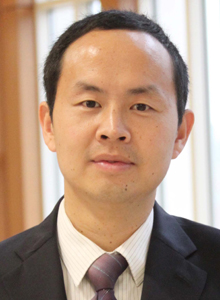Program Information
X-Ray Acoustic Computed Tomography: Concept and Design
L Xiang*, M Ahmad, C Carpenter, G Pratx, A Nikoozadeh, B Khuri-Yakub, L Xing, Stanford University, Stanford, CA
TH-A-141-2 Thursday 8:00AM - 9:55AM Room: 141Purpose: We developed X-ray acoustic computer tomography (XACT), a new imaging modality which combines X-ray contrast and high ultrasonic resolution in a single modality. Both X-rays and ultrasound propagate long distances in tissue; it has the potential to break through the fundamental depth limitation of laser-induced photoacoustic tomography.
Methods:In our designed XACT imaging system, short pulsed x-ray beams (60-nanosecond) were generated from an X-ray source operated at the energy of 270 kVp with a 15-Hz repetition rate. The X-ray induced acoustic signal will be captured by an ultrasonic transducer. The transducer will detect the acoustic signals in the imaging plane at each scanning position. A pulse preamplifier will receive the signals from the transducer and deliver the amplified signals to a secondary amplifier. Signals will be recorded and averaged by oscilloscope. One set of data will incorporate 200 positions as the receiver scans 360° around the sample. The XACT image will then be reconstructed with the filtered back projection algorithm.
Results:Simulations were conducted to test the proposed theory and assess the performance of the imaging reconstruction algorithms for this novel imaging modality. From the results of Monte Carlo simulation, X-rays photons can easily penetrate deeper than 10 cm when X-ray energy exceeds 200 keV. Theoretically, the imaging spatial resolution can be as fine as 100 μm using a 10-MHz ultrasound transducer for acoustic signal detection.
Conclusion:These simulations provide a new framework for optimizing the design of X-ray acoustic imaging system. This new modality may be useful for a number of applications, such as molecular imaging, providing the location of a fiducial marker for anatomical reference, or monitoring the x-ray dose distribution during radiation therapy. Although further research is needed to validate our work in future experiments, the benefits of this modality, as highlighted in this work, encourage further study.
Funding Support, Disclosures, and Conflict of Interest: The work was partially supported by grants from NIH (1R01 CA133474 and 1R21 CA153587) and SRFDP (20124407120012).
Contact Email:


